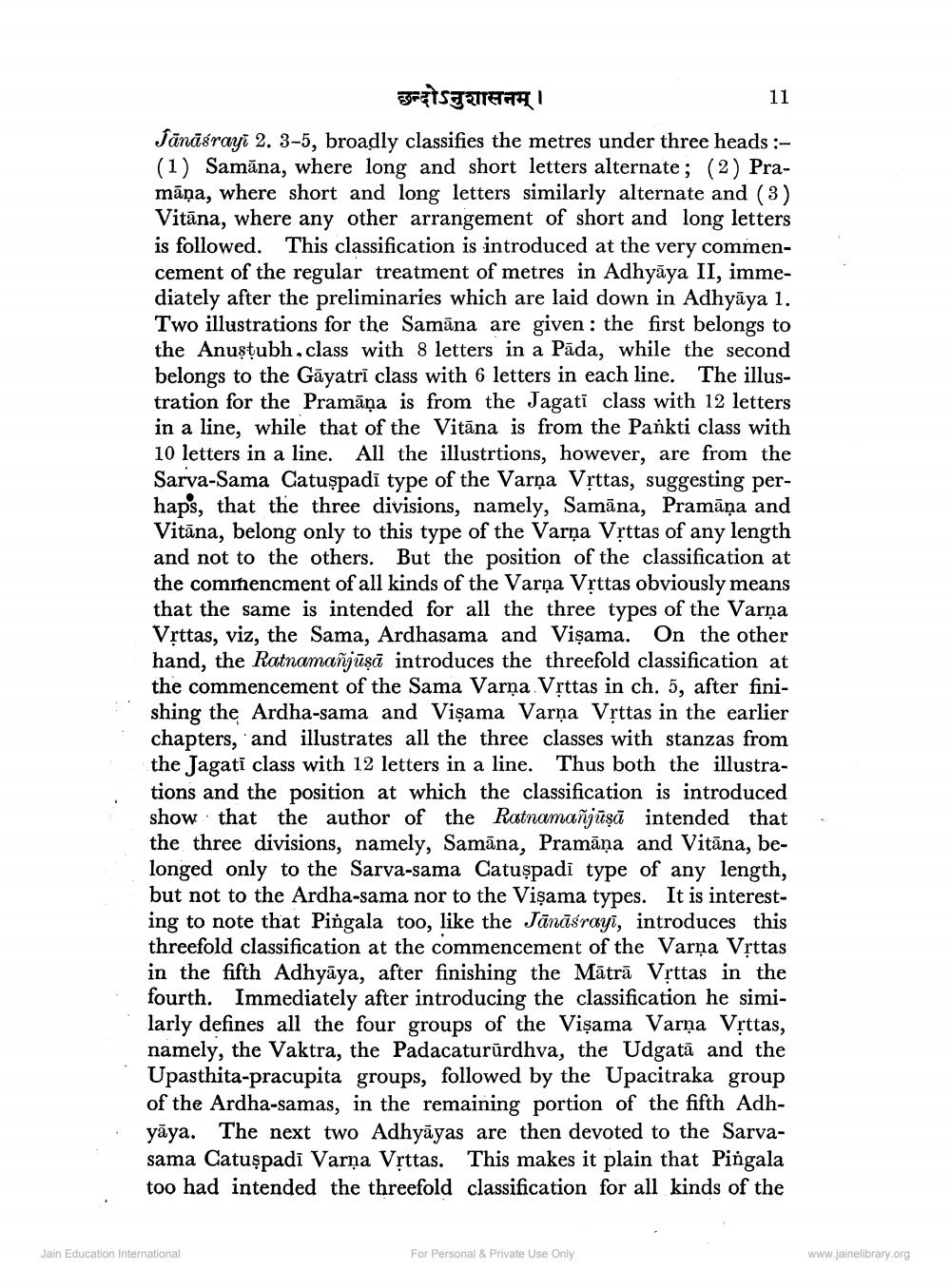________________
छन्दोऽनुशासनम् ।
Jānāšrayi 2. 3-5, broadly classifies the metres under three heads :(1) Samāna, where long and short letters alternate; (2) Pramāņa, where short and long letters similarly alternate and (3) Vitāna, where any other arrangement of short and long letters is followed. This classification is introduced at the very commencement of the regular treatment of metres in Adhyāya II, immediately after the preliminaries which are laid down in Adhyāya 1. Two illustrations for the Samāna are given : the first belongs to the Anustubh class with 8 letters in a Pāda, while the second belongs to the Gāyatri class with 6 letters in each line. The illustration for the Pramāṇa is from the Jagati class with 12 letters in a line, while that of the Vitāna is from the Pankti class with 10 letters in a line. All the illustrtions, however, are from the Sarva-Sama Catuşpadi type of the Varņa Vrttas, suggesting perhaps, that the three divisions, namely, Samāna, Pramāņa and Vitāna, belong only to this type of the Varņa Vịttas of any length and not to the others. But the position of the classification at the commencment of all kinds of the Varņa Vrttas obviously means that the same is intended for all the three types of the Varna Vrttas, viz, the Sama, Ardhasama and Vişama. On the other hand, the Ratnamañjūşā introduces the threefold classification at the commencement of the Sama Varna Vrttas in ch. 5, after finishing the Ardha-sama and Vişama Varņa Vrttas in the earlier chapters, and illustrates all the three classes with stanzas from the Jagati class with 12 letters in a line. Thus both the illustrations and the position at which the classification is introduced show that the author of the Ratnamañjūşā intended that the three divisions, namely, Samāna, Pramāṇa and Vitāna, belonged only to the Sarva-sama Catuşpadi type of any length, but not to the Ardha-sama nor to the Vişama types. It is interesting to note that Pingala too, like the Jānāšrayī, introduces this threefold classification at the commencement of the Varņa Vrttas in the fifth Adhyāya, after finishing the Mātrā Vrttas in the fourth. Immediately after introducing the classification he similarly defines all the four groups of the Vişama Varna Vrttas, namely, the Vaktra, the Padacaturürdhva, the Udgatā and the Upasthita-pracupita groups, followed by the Upacitraka group of the Ardha-samas, in the remaining portion of the fifth Adhyāya. The next two Adhyāyas are then devoted to the Sarvasama Catuşpadi Varna Vrttas. This makes it plain that Pingala too had intended the threefold classification for all kinds of the
Jain Education International
For Personal & Private Use Only
www.jainelibrary.org




